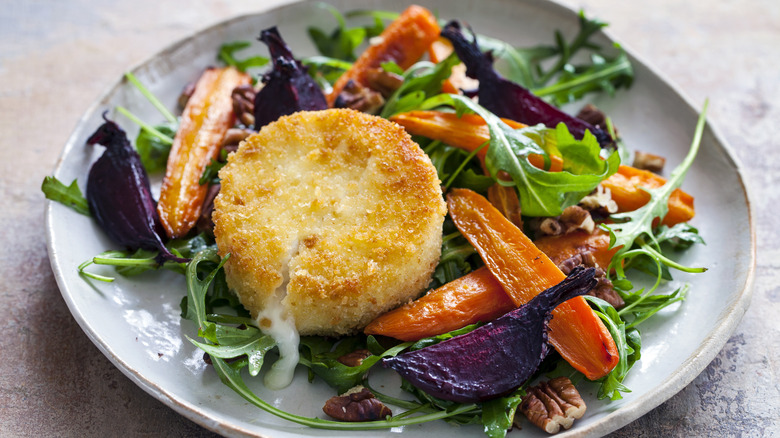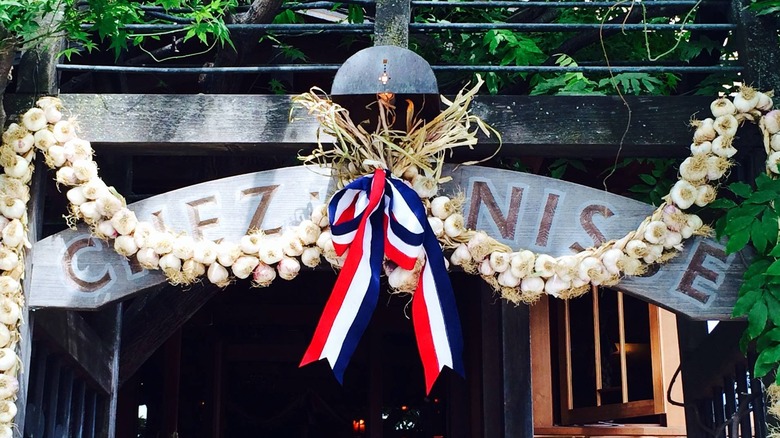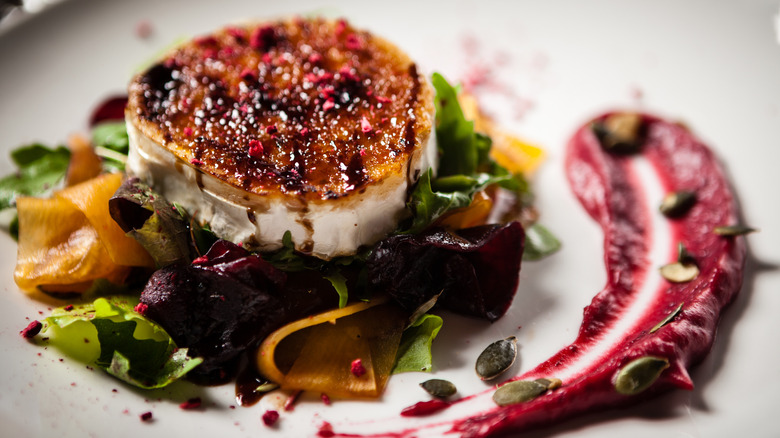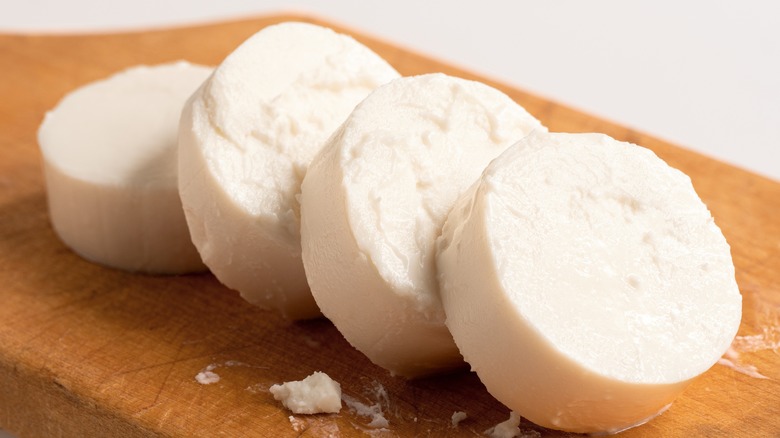Warm Goat Cheese Salad Is A French Classic You May Have Forgotten
Not every classic recipe was developed hundreds of years ago in such-and-such royal court or by monks in Italian monasteries. Some are relatively new, as in the case of warm goat cheese salad. Okay, okay, so goat cheese has been eaten for several millennia but probably not the way it's enjoyed in this dish. Goat cheese is a specialty of France's Loire Valley, and since it can be found in bistros all over France today, it can be fairly assumed it began there.
The light and decadent warm goat cheese salad includes salad greens dressed in a light vinaigrette dressing, served with rounds of goat cheese that have been fried or broiled, and your choice of fruits, veggies, and nuts. Many people credit Berkeley, California's Chez Panisse restaurant for igniting the craze in America in the 1980s. By the time the 90s arrived, warm goat cheese salad was on menus and in home kitchens everywhere, much like designer cupcakes in the early 2000s and crispy roasted brussels sprouts twenty years later. But warm goat cheese salad is hardly a dish of the past; folks still love it today because it tastes fantastic and is easy to assemble.
The rise of a classic
One of the first cheeses the chef, restaurateur, author, and Francophile, Alice Waters received when she opened Chez Panisse in 1981 was a French-style chèvre (soft goat cheese). She used it to create warm goat cheese salad, and the dish became a staple on the menu for years. After much fanfare and diner delight (not to mention a nod to goat cheese in a 1983 New York Times article), the salad trickled onto the menus of countless restaurants, reaching the pinnacle of its popularity in the 1990s.
During this decade, warm goat cheese salad often utilized lettuces of the moment like frisée, mache, and arugula, or the ever-popular mesclun mix, and was served with toasted walnuts, honey mustard dressing, and sometimes another darling ingredient of the decade: sun-dried tomatoes. People couldn't get enough of the cool salad combined with warm, soft cheese coated in a crunchy crust that acted as pseudo croutons. As the millennium and century came to an end, some restaurant menus slowly began phasing out the beloved first course in favor of watermelon and feta salads, but others held on to the once-crowd favorite.
A salad with staying power
One could've made the argument in the 90s that warm goat cheese salad's omnipresence was a trend, but the fact that you can still find it at restaurants today suggests that it's a classic dish. And perhaps it was everywhere for a good reason: It's a simple dish that uses minimal ingredients, cooking techniques suitable for even novice cooks, and it tastes delicious. The salad hits all the right beats: the tangy dressing, bitter greens, creamy goat cheese, crunchy crust, sweet fruit, and earthy beets. It's vegetarian-friendly, classy enough to be served at a gourmet dinner, yet totally appropriate as a satisfying lunch.
Chefs today may be taking new liberties with the salad (in the forms of whipped goat cheese, for example), but the concept remains the same — a really well-balanced and tasty dish that is still pretty easy to find on restaurant menus. Of course, if you'd rather stay in, making the salad is a breeze.
Stay in and cook
Gather your favorite salad greens and dress them lightly in a tangy dressing of your choice. This could be a simple French vinaigrette, honey mustard dressing, or a drizzle of extra virgin olive oil and good balsamic vinegar. Chèvre cheese is often sold in logs, and the trick to cutting them into neat circles without breaking them is to cut them with unflavored dental floss. Next, coat the cheese rounds in bread crumbs. You may find that the crumbs will stick to the cheese better if you first dip the rounds into beaten egg and then coat them in the bread crumbs. Lightly fry the rounds in oil in a pan until both sides are just golden brown. You can also bake the cheese instead of frying it. Top the salad greens with however many cheese rounds you desire.
It's really as easy as all that, but many recipes also call for additional ingredients like the aforementioned beets, candied or toasted nuts (pecans, walnuts, or pistachios), cherry tomatoes, dried fruit, or whatever else your tastebuds desire. Call it a throwback recipe if you must, but this is one dish we think is already timeless.



